
The Pterophoridae or plume moths are a family of Lepidoptera with unusually modified wings. Though they belong to the Apoditrysia like the larger moths and the butterflies, unlike these they are tiny and were formerly included among the assemblage called "microlepidoptera".
Grapevine moth or Grape moth may refer to:
Accuminulia is a small genus of tortrix moths belonging to the tortricine tribe Cochylini. The genus was first described by John W. Brown in 1999, and consists of two species, both of which are known from Chile.
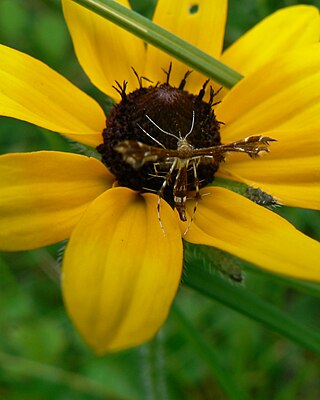
Geina tenuidactyla, the berry plume moth or Himmelman's plume moth, is a moth of the family Pterophoridae. The species was first described by Asa Fitch in 1854. It is found in North America, including Mississippi, Massachusetts, New York, Delaware, Maryland, West Virginia, Illinois, Ontario, Colorado, Nevada and California.

Geina didactyla is a moth of the Pterophoroidea family. It is found in most of Europe, east into Russia.

Geina periscelidactyla is a moth of the Pterophoroidea family. It is found in eastern North America.
Geina integumentum is a species of moth in the genus Geina known from Puerto Rico and the Virgin Islands. Moths of this species take flight in July and August and have a wingspan of about 11-12 millimetres. The specific name "integumentum" refers to a "cover" over the ostium of the female.
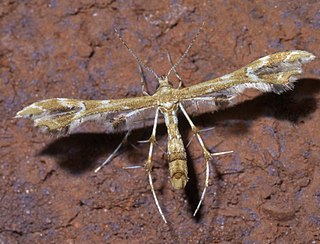
Geina is a genus of moths in the family Pterophoridae.

Emmelina is a genus of moths in the family Pterophoridae with a nearly cosmopolitan distribution.
Geina sheppardi, or Sheppard's plume moth, is a moth of the family Pterophoridae. It known from western North America, including Mississippi, Ontario and Wisconsin.
Ypsolopha buscki is a moth of the family Ypsolophidae. It is known from the United States, including Arizona.
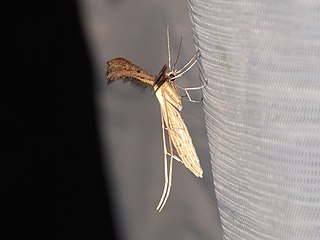
Pterophorinae is a subfamily of moths in the family Pterophoridae.
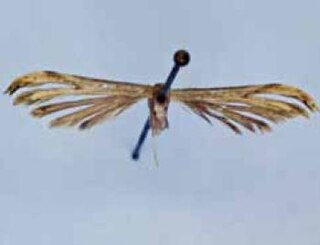
Emmelina buscki is a moth of the family Pterophoridae first described by William Barnes and Arthur Ward Lindsey in 1921. It is found in North America.

Sicydium is a genus of gobies native to fast-flowing streams and rivers of the Americas with a couple species native to Middle Africa.
Accuminulia buscki is a species of moth of the family Tortricidae described by John W. Brown in 2000. It is found in Chile. The species was first recorded as an interception at the Port of New York in a shipment of grapes from Chile.
Odontocera buscki is a species of beetle in the family Cerambycidae.
Lethata is a genus of moths in the subfamily Stenomatinae.
Lethata buscki is a moth in the family Depressariidae. It was described by W. Donald Duckworth in 1964. It is found in Belize, Honduras and Mexico.
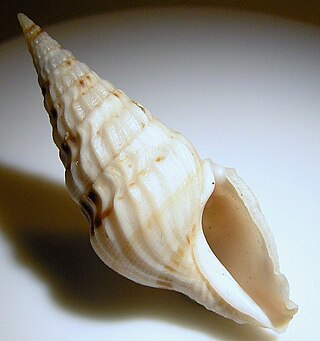
The anal sulcus, also called the anal sinus or anal canal, in Gastropods is a notch, a shelly tube at the top of the aperture. It is the first notch close to the suture. It houses the anal siphon through which the snail expels water and waste products.
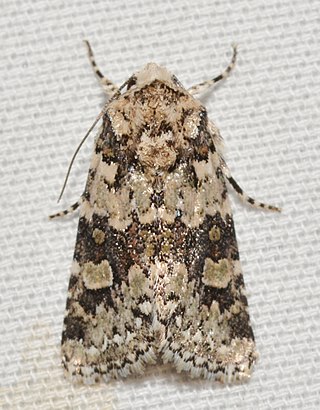
Lacinipolia buscki is a species of cutworm or dart moth in the family Noctuidae first described by William Barnes and Foster Hendrickson Benjamin in 1927. It is found in Australia and North America.
This page is based on this
Wikipedia article Text is available under the
CC BY-SA 4.0 license; additional terms may apply.
Images, videos and audio are available under their respective licenses.











